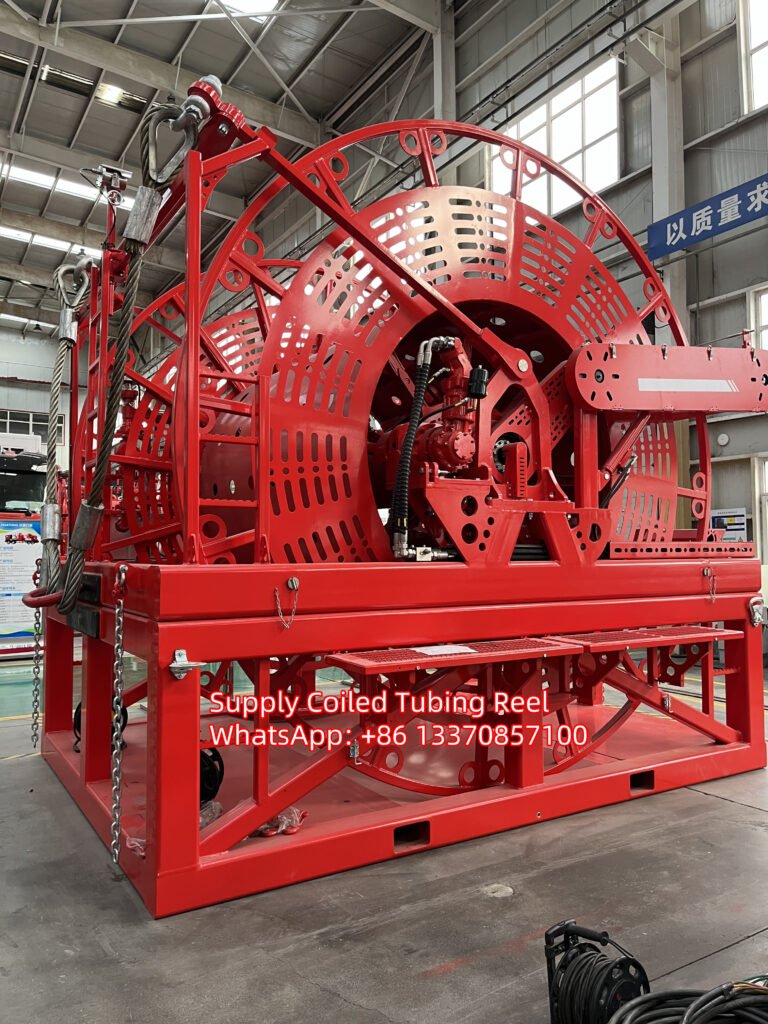
In Coiled Tubing (CT) operations, the reel motor is an hydraulic motor that powers the reel drum — the large spool that stores and winds/unwinds the continuous length of coiled tubing.
Here’s a simple breakdown:
What It Does:
The reel motor provides the rotational force (torque) needed to wind the tubing onto the reel or unwind it into the well.
It controls the speed and direction of the reel’s rotation.
It helps maintain proper tension on the tubing during running in hole (RIH) and pulling out of hole (POOH).
Where It’s Located:
It’s mounted on the side of the coiled tubing reel unit and connected to the reel shaft or gearbox.
How It Works:
In most units, the reel motor is hydraulically driven — it uses pressurized hydraulic fluid from the power pack (HPU) to rotate the reel.
The operator can control it from the control cabin, adjusting speed and direction as needed.
Functions During Operation:
Spooling: Wind tubing neatly and evenly on the reel after a job.
Paying out tubing: Unwind tubing smoothly into the injector head.
Tension control: Prevent slack or over-tension which could damage the tubing.
If Reel Motor Fails:
Tubing movement becomes difficult or impossible.
Risk of tubing damage, uneven spooling, or even operational downtime.
In short: The reel motor is the “muscle” that turns the reel drum, making sure the coiled tubing is safely and smoothly deployed or retrieved during operations.
